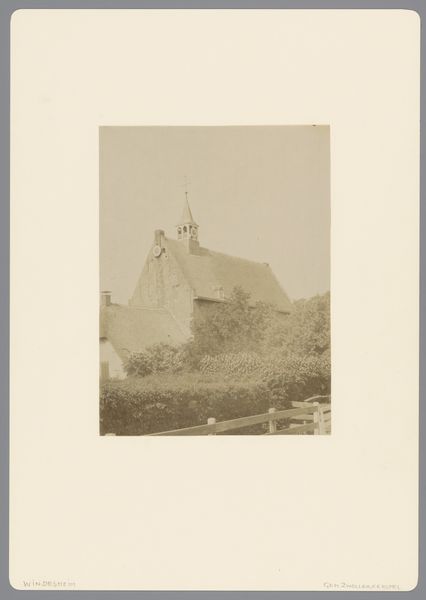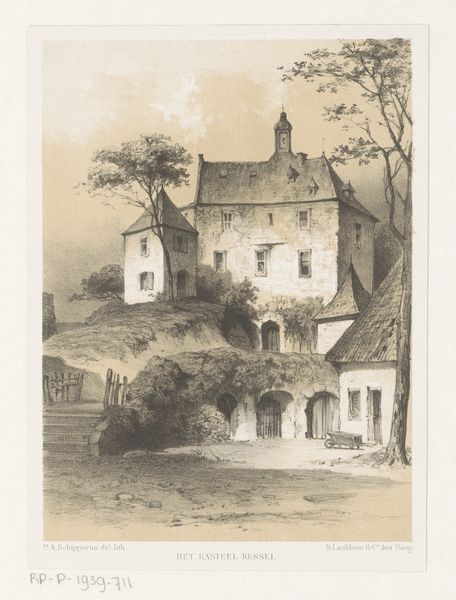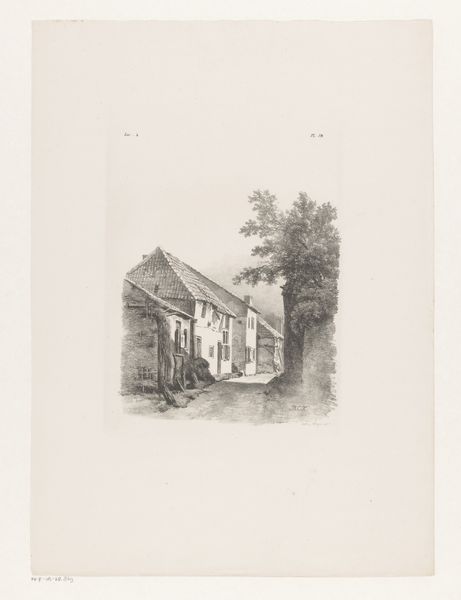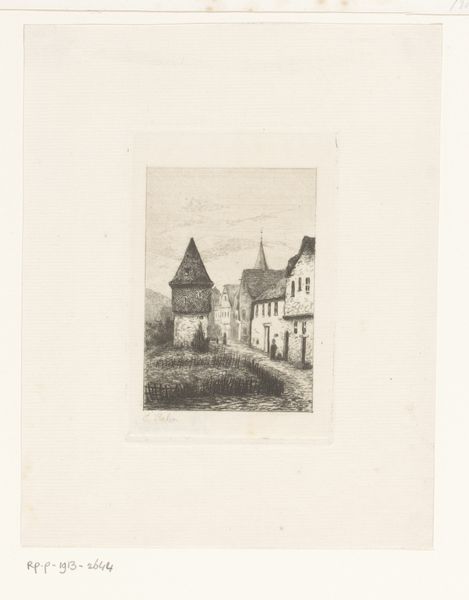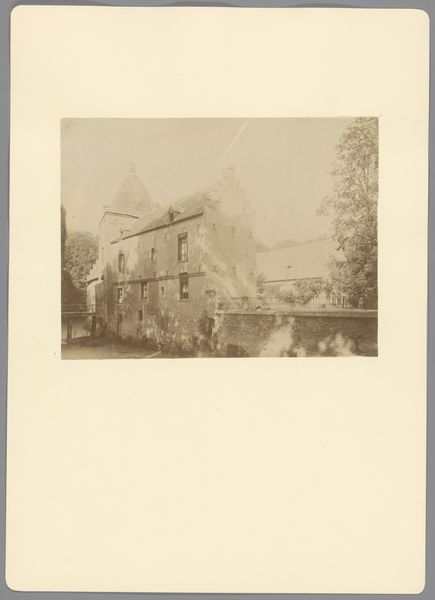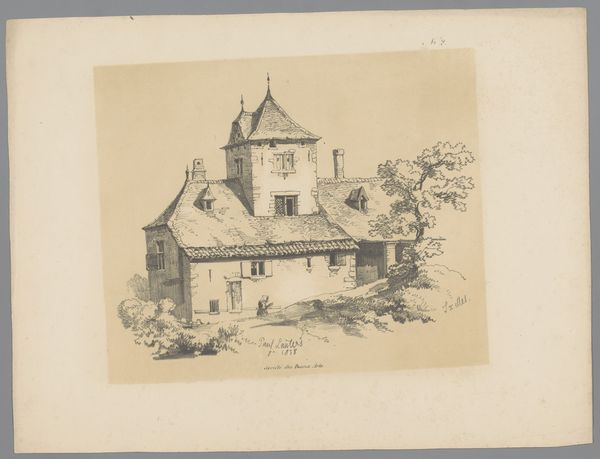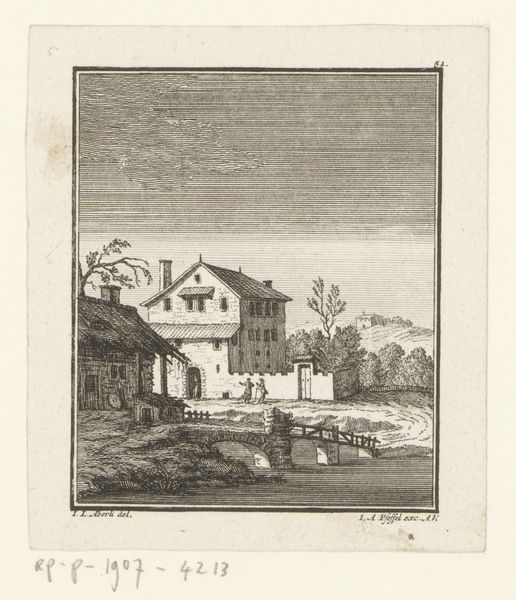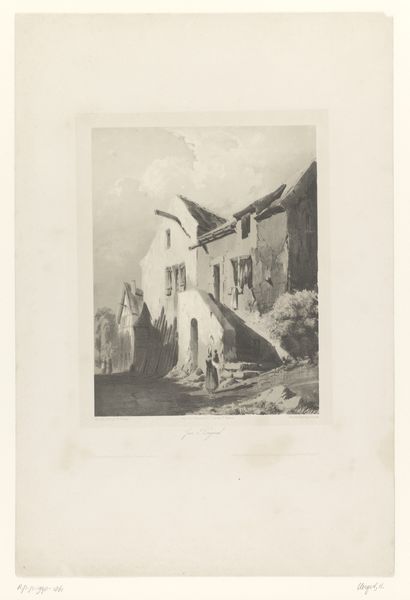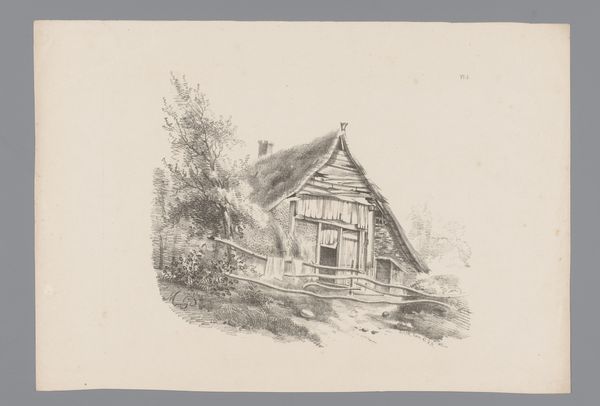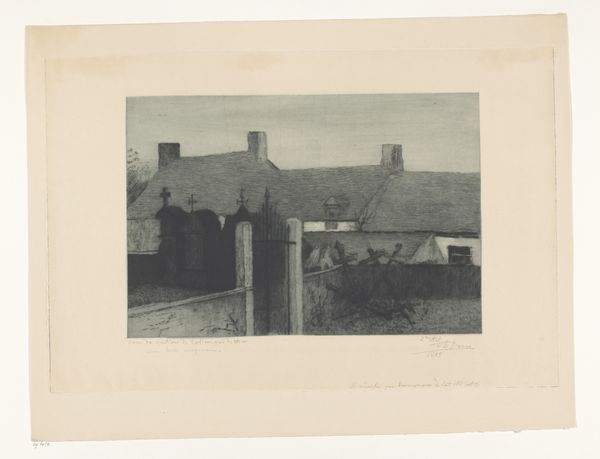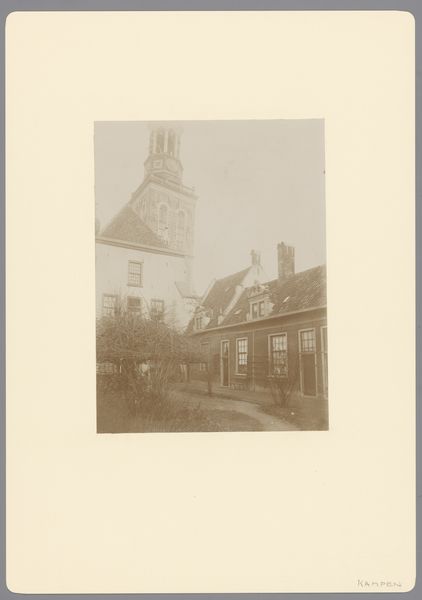
print, etching
#
dutch-golden-age
# print
#
etching
#
old engraving style
#
landscape
#
geometric
#
cityscape
Dimensions: height 348 mm, width 447 mm
Copyright: Rijks Museum: Open Domain
Editor: This etching, "De Cuneratoren, Rhenen," possibly from between 1912 and 1922 by W.O.J. Nieuwenkamp, gives such a distinct sense of place through its detailed depiction of Dutch architecture. The light seems almost hazy. How do you interpret this work in terms of its historical context? Curator: The focus here isn't just on the landscape, but on how it's been shaped, and in turn shapes, the community. Consider the Cuneratoren itself. How does its prominent placement influence our understanding of power, both religious and secular, within Rhenen at that time? What statement is the artist trying to make? Editor: That's interesting, I didn't think of the placement of the tower as being intentional beyond aesthetic reasons. So, this piece isn’t just about pretty buildings, but a comment on the Church's role in society? Curator: Exactly. Nieuwenkamp chooses to portray it alongside more modest, domestic architecture, but he clearly depicts its impact on shaping daily life in this town. Do you think the medium – the print – is important here? Editor: Well, a print allows for wider distribution, right? So more people could have access to this particular perspective of Rhenen, spreading this particular socio-political observation further. Curator: Precisely. And prints like these played a crucial role in shaping a national identity, promoting particular ideas about Dutch history and its place in the world. How do you think the artist saw his role? As a reporter, or something more involved? Editor: Probably more involved. Choosing which buildings to depict, the perspective, suggests that he saw himself as having some role in shaping how people view Rhenen and its history. It gives an intimate snapshot into early 20th-century Dutch life. Curator: Absolutely. Seeing the tower framed by these modest houses, brought a new appreciation for how this etching functions as a cultural and historical document.
Comments
No comments
Be the first to comment and join the conversation on the ultimate creative platform.
